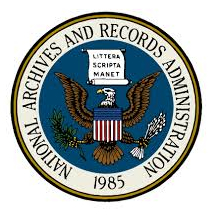An Efficiency Standard on Every Computer (and Server)
The Department of Energy may soon mandate new labeling and efficiency standards for all computers and servers sold in the United States.
 According to a pair of proposed rules published in the Federal Register (here and here), the Federal Government has "determined tentatively" that computers and computer servers are covered under the Energy Policy and Conservation Act (EPCA).
According to a pair of proposed rules published in the Federal Register (here and here), the Federal Government has "determined tentatively" that computers and computer servers are covered under the Energy Policy and Conservation Act (EPCA).
Passed in 1975 in response to the 1973 oil crisis, the EPCA instituted a comprehensive federal energy policy aimed at increasing energy production and supply, reducing energy demand and boosting energy-efficiency. The Strategic Petroleum Reserve, the Energy Conservation Program for Consumer Products, and the Corporate Average Fuel Economy regulations all owe their existence to the EPCA.
Part B of Title III of the EPCA (codified as Subchapter III, Part A) established the Energy Conservation Program for Consumer Products Other Than Automobiles, which gives the Department of Energy the authority to develop, revise, and implement minimum energy conservation standards and test procedures for consumer products and industrial equipment. The law covers more than 50 categories of appliance and equipment types, comprising a range of residential, commercial and industrial, lighting, and plumbing applications.
The list of covered products does not currently extend to computers or servers; however, the EPCA specifies that the Secretary of Energy can add new categories as long as these two conditions are met:
(1) Classifying the product as a covered product is necessary for the purposes of EPCA; and
(2) The average annual per-household energy use by products of such type is likely to exceed 100 kilowatt-hours (or its Btu equivalent) per year.
The path to mandatory efficiency standards, a step that goes beyond labeling, is paved with more stringent criteria, to wit:
(1) The average household energy use of the products has exceeded 150 kWh per household for a 12-month period;
(2) The aggregate 12-month energy use of the products has exceeded 4.2 TWh;
(3) Substantial improvement in energy efficiency is technologically feasible; and
(4) Application of a labeling rule under 42 U.S.C. 6294 is unlikely to be sufficient to induce manufacturers to produce, and consumers and other persons to purchase, covered products of such type (or class) that achieve the maximum energy efficiency that is technologically feasible and economically justified.
The current proposed rules, however, deal with the less onerous challenge, whether computers or computer servers fulfill the criteria for being added as a covered product.
Responding to some of these challenges on the computer side, the DOE states:
The aggregate energy use of computers is significant and is projected to hold steady in the near future....Coverage of computers will enable the conservation of energy supplies through both labeling programs and the regulation of computer energy efficiency. There is significant variation in the annual energy consumption of different models currently available, therefore technologies exist to reduce the energy consumption of computers.
And:
DOE estimates the average annual per-household electricity usage to be approximately 291 kWh/yr. Therefore, DOE tentatively determines that the average annual per-household energy use for computers is likely to exceed 100 kWh/yr, satisfying the provisions of 42 U.S.C. 6292(b)(1).
Conclusions on the server side are similar:
The aggregate energy use of servers is significant and rising as cloud computing becomes more ubiquitous. Individuals and enterprises increasingly rely on centralized applications and data storage. Coverage of servers will enable the conservation of energy supplies through both labeling programs and the regulation of server energy efficiency.
...
Several technologies exist to reduce the energy consumption of servers, including virtualization, improved capacity management, high-efficiency hard disk drives, dynamic frequency/voltage scaling, and improved network port efficiency. In addition, reduced server energy demand enables secondary energy savings from space cooling, ventilation, and uninterruptible power supplies.
And:
...DOE estimated the average annual household energy use for households that use servers to be at least 1900 kWh/yr, and possibly much larger. Therefore, DOE tentatively determines that the average annual per-household energy use for servers is very likely to exceed 100 kWh/yr, satisfying the provisions of 42 U.S.C. 6292(b)(1).
Based on these data points, it appears likely that computers and servers will soon qualify for covered status, but not before the public has its say. The DOE is currently seeking feedback on the these proposals (Document number 2013-16728 and Document number 2013-16730), especially as it pertains to:
- Definition(s) of computers/servers.
- Whether classifying computers or servers as a covered product is necessary or appropriate to carry out the purposes of EPCA.
- Calculations and values for average household energy consumption.
- Availability or lack of availability of technologies for improving energy efficiency of computers and servers.
The comment period ends Aug. 12, 2013. If the DOE determines that computers and/or servers qualify for covered status, that would put the ball in motion for test procedure rulemaking and potential future standards. At each stage, the public will have the opportunity to submit comments.
According to DOE figures, standards implemented since 1987 have prevented some 1.9 billion tons of carbon dioxide from being released. This is equivalent to the annual greenhouse emissions from 373 million automobiles. The previous status quo would have necessitated the construction of 31 new power plants. Looking forward, the DOE estimates that these standards will have saved 3.8 billion tons of carbon dioxide by 2020, and 9 billion tons by 2045.










